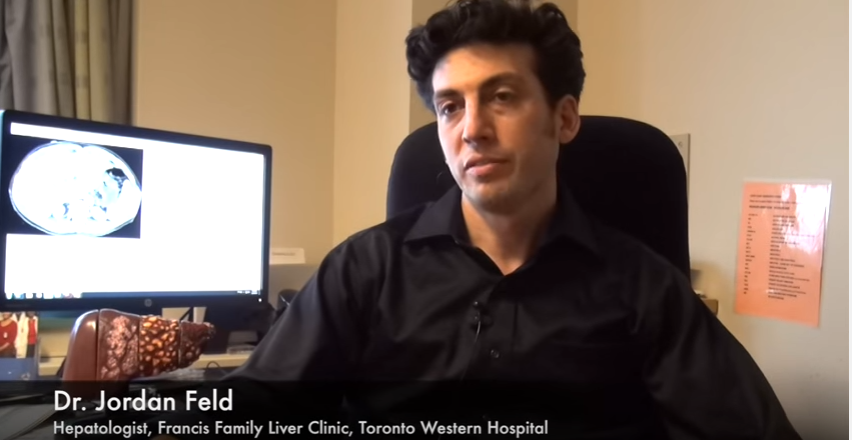The unique Centre brings together almost 100 staff for both basic and clinical research. It’s integrated with a clinic offering patients access to the most advanced treatments, customized care plans, peer-to-peer patient support, outreach into communities, education and expertise in many liver diseases.
“Therapies for liver disease are rapidly evolving,” says Dr. Harry Janssen, Director of the Toronto Centre for Liver Disease (TCLD). “But to take full advantage of this, we need to ensure that individuals with these diseases can access the care they need, including screening programs, diagnosis, state-of-the-art healthcare delivery, research innovation and awareness.”
With its focus on rapidly evolving research from the bench to the bedside, the Centre now has the largest liver clinic in North America, more than 100 ongoing clinical research studies, along with genetic studies examining biomarkers for disease outcomes, as well as research on the full spectrum of liver disease – such as viral hepatitis and autoimmune liver disease, fatty liver disease and liver cancer.
“The outstanding expertise in our Centre allows us to accelerate basic and clinical research discoveries into clinical practice so that patients can benefit at the earliest possible opportunity,” explains Dr. Janssen, who is a renowned scientific leader in numerous global studies on anti-viral treatment for viral hepatitis.
“We are the only comprehensive Liver Centre in the Greater Toronto Area, with one of the largest viral hepatitis treatment programs worldwide, as well as many patients from other countries with high rates of viral hepatitis.”
Viral hepatitis is more common among some immigrants than among the general population, due to a number of factors, including: unsafe medical practices such as transfusions of contaminated blood, shared needles or other equipment in foreign countries, and barriers to healthcare and testing of immigrants, such as cultural and language obstacles to services and information.
It is estimated that one in five Canadians, or more than five million people, has some form of liver disease. The most common forms of liver disease — viral hepatitis, fatty liver disease and liver cancer — will have huge implications for the burden of care in hospitals and clinics.
As the infected population ages, the incidence of liver disease complications will rise. Due to the slow progression of the illness, infections that occurred decades ago are now beginning to challenge healthcare resources.
Liver cancer is growing rapidly every year, says Dr. Morris Sherman, a Centre physician and leading expert in liver cancer. He points out that the main risk factors for liver cancer are viral hepatitis B and C infections, which are still “invisible” diseases. Many of those infected with hepatitis are not aware they have it, nor how they acquired the infection. (Read how liver patient Larry Wong has started a peer group at the clinic.)
“It’s an epidemic, and it will tax our health care system within the next decade. It’s critical that we address this now,” he says.
The death rate from chronic viral hepatitis exceeds that of HIV. Less than one in 10 hepatitis B patients and less than 15 per cent of hepatitis C patients have been effectively treated, despite the fact that hepatitis C is now curable, as shown in published research led by Dr. Jordan Feld, physician in the Toronto Centre for Liver Disease. (Dr. Feld discusses treatment breakthroughs in this video.)
“Liver disease on the whole is unrecognized in the general population, as it is in health-care professions,” says Dr. Feld, who is an international expert in hepatitis C. “There’s a stigma linked to this illness that revolves around alcohol and drug use. People need to understand there are many causes of liver disease, and that early detection and treatment can prevent the disease from progressing to cancer and death.”

